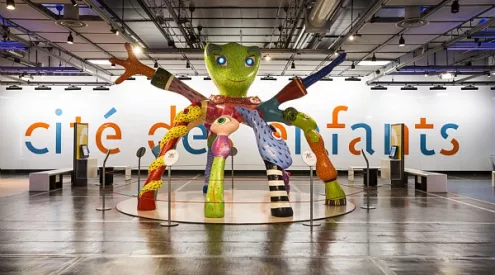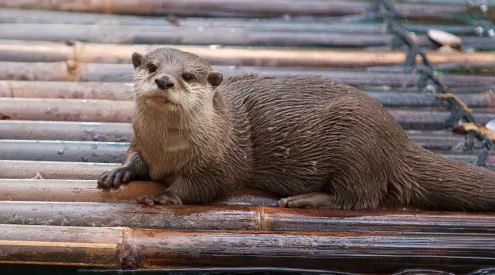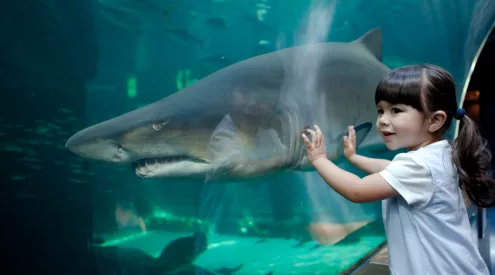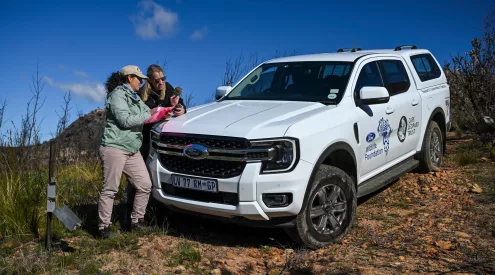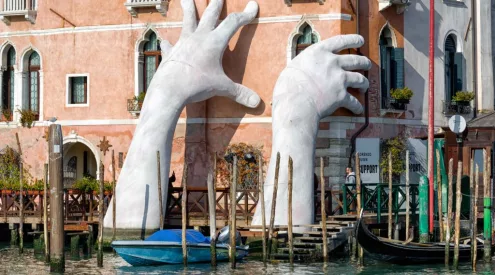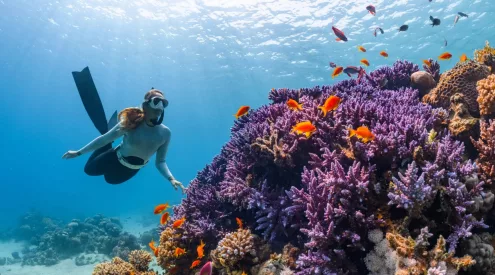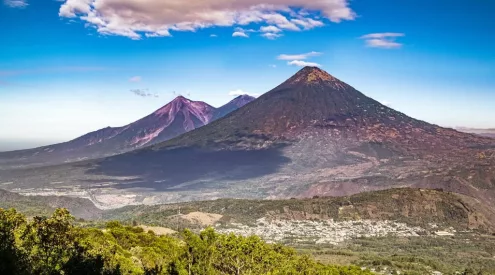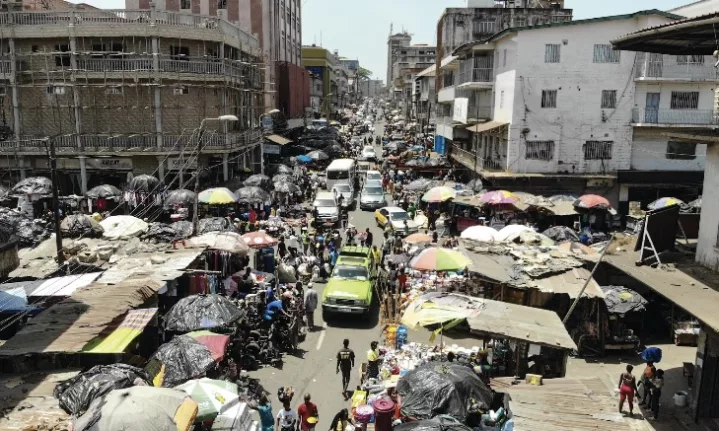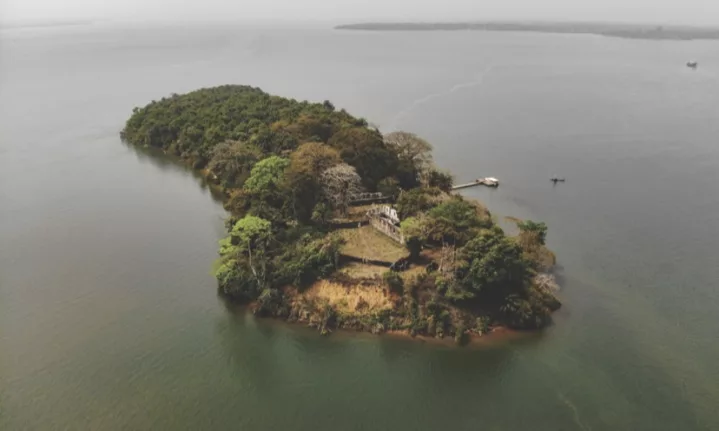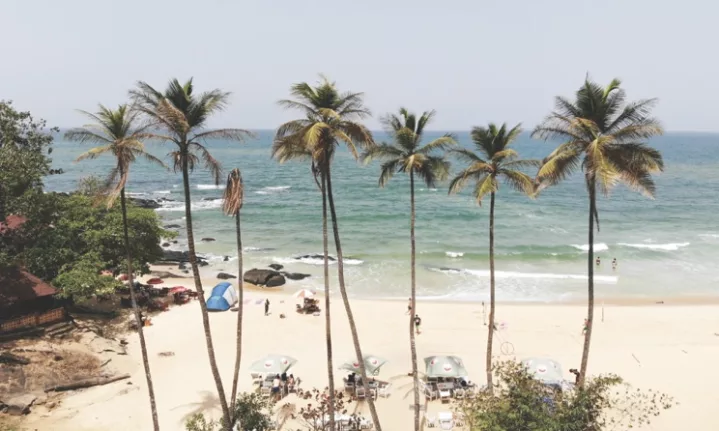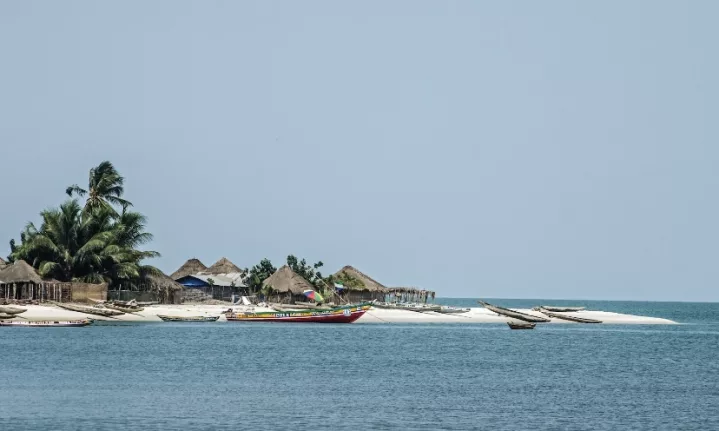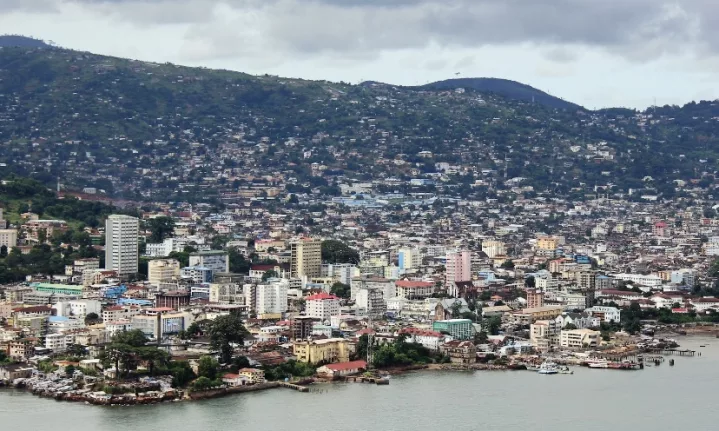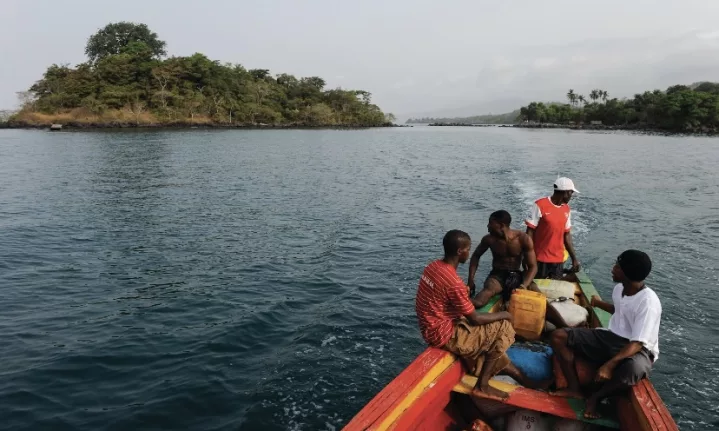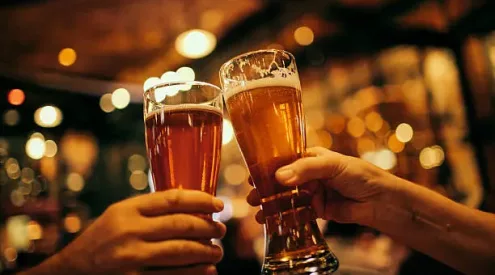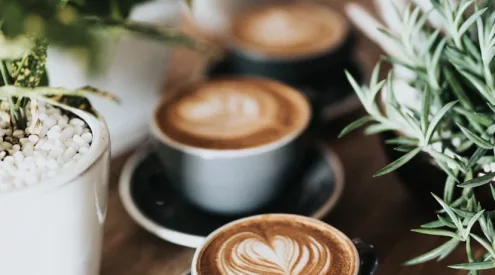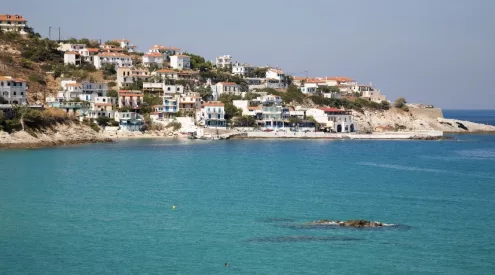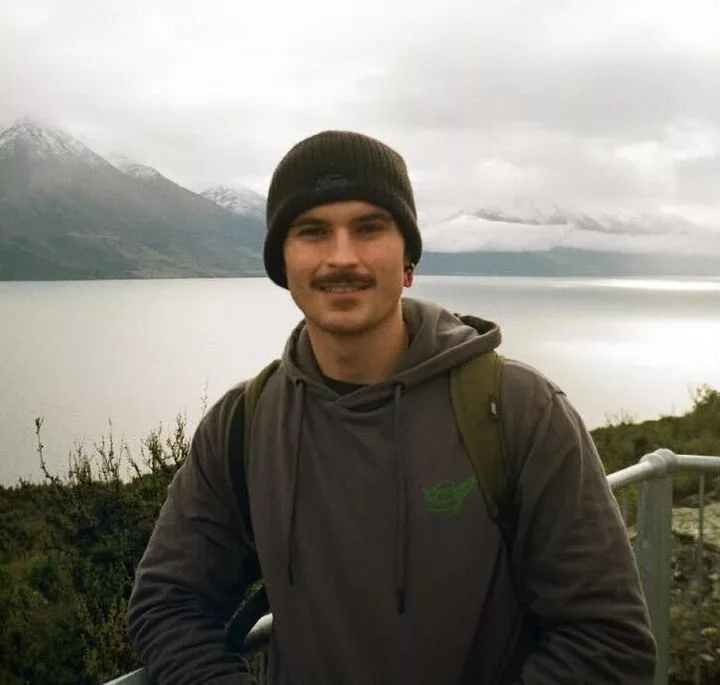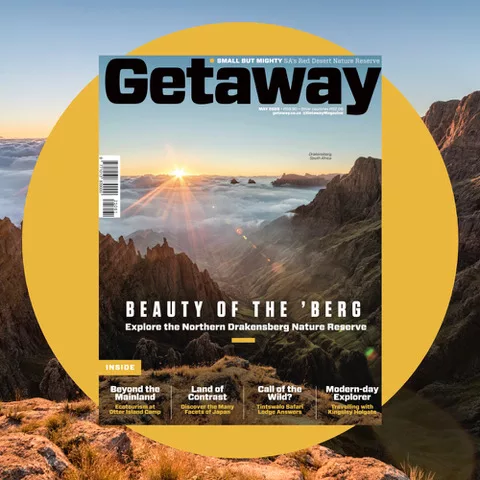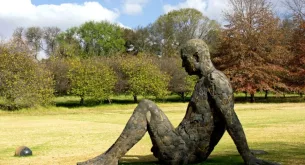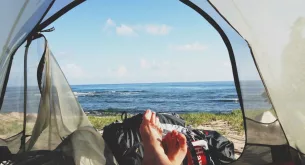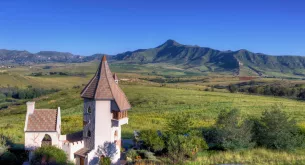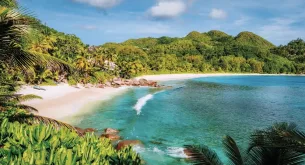Halfway to the Turtle Islands, our boat grinds to a halt in the sand. We haven’t timed our trip well, as the tide is going out, and our dilapidated boat is too big for the increasingly shallow waters, now waist-deep.
The boatman tinkers with the motor, attempting to free our vessel from the sand. We limp for a few minutes, but the propellers soon revert to churning deep into the sand.
The mainland is a faint blur on the horizon. Luckily, a father and son manning a small wooden boat with an engine appear a few hundred metres away. We wave and shout to get their attention, and they pull up alongside us.
Luckily, they’re heading in the same direction we are. An animated conversation ensues – lots of gesticulating and suggestions – but without an immediate solution to our predicament. Suddenly, our guide, Peter, abandons the ship. Jumping into the wooden boat, he waves goodbye to us, shouting that he will get help.
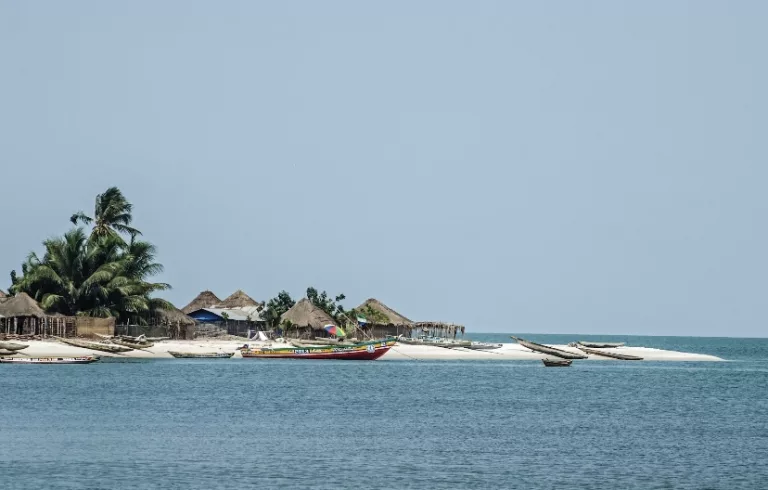
The hours drag on. We entertain ourselves as best we can. We swim, we swim again, we swim some more. We wade through the shallow waters to a nearby dugout canoe and inspect the fisherman’s catch – a bucket of sea snails, a few small fish still flapping and a little bucket containing a lone seahorse.
We swim back to our boat and rummage through our bags for anything edible. Breakfast is a distant memory, and dinner is an unknown quantity. After a conversation, mostly in mime and sign language, the captain seems confident that Peter will return. When?
Anyone’s guess. Hours later, just as it’s getting dark and we’ve switched to a smaller ‘rescue’ boat, land finally comes into view. It’s a very welcome sight. Travelling in Sierra Leone is not easy, but it’s always an adventure.
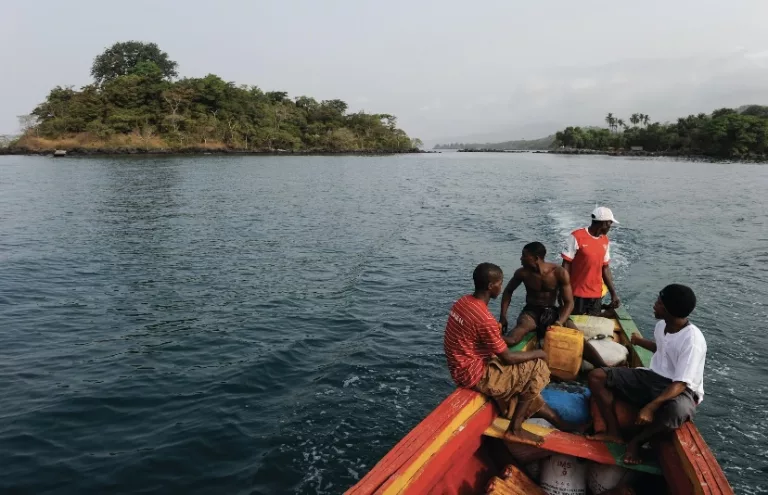
The name Sierra Leone dates back to 1462 when Portuguese explorer Pedro da Cintra was sailing down the west coast of Africa and spotted the tall mountains on what is now the Freetown Peninsula and called them the ‘Serra Lyoa’ or ‘Lion Mountains’.
Over time, English sailors and later British colonisers adapted the name to Sierra Leone. Nowadays, locals affectionately refer to the country as Salone.
I start my exploration of Sierra Leone in the capital, Freetown, a city teeming with life and history. My first stop is the Big Market, a bustling place with everything from local arts and crafts to fruit, vegetables and everyday utilitarian items.
Good-natured bartering with the mainly female stall owners is the order of the day. My next stop is the nearby Cotton Tree, one of the city’s significant historical landmarks. The exact age of the Cotton Tree is unknown, but it’s thought to be around 400 years old.
In 1792, a group of former slaves allegedly gathered under the tree to pray. In 2023, a storm felled the tree’s upper reaches, though its trunk and a few branches still stand as a reminder of the past. After a quick stroll from the Cotton Tree, I reach the National Museum, which offers glimpses into the country’s history and diverse cultures.
The first room houses a collection of about 10 full-body masks, some with the heads of dead animals that once belonged to mysterious secret societies. The most impressive is the ‘Odelay’, a devil covered in an intricate design of shells, beads, wooden sticks and coloured threads.
A visit to the National Railway Museum near the docks is up next, but first, we must get there. Journeys in Freetown are rarely straightforward. The first few streets we try are lined with makeshift stalls and full of pedestrians wandering across the road at will, somehow magically sidestepping the traffic at the last minute. We inch our way up the congested Kissy Road, renowned in Freetown as a giant traffic jam, looking for an opportunity to turn.
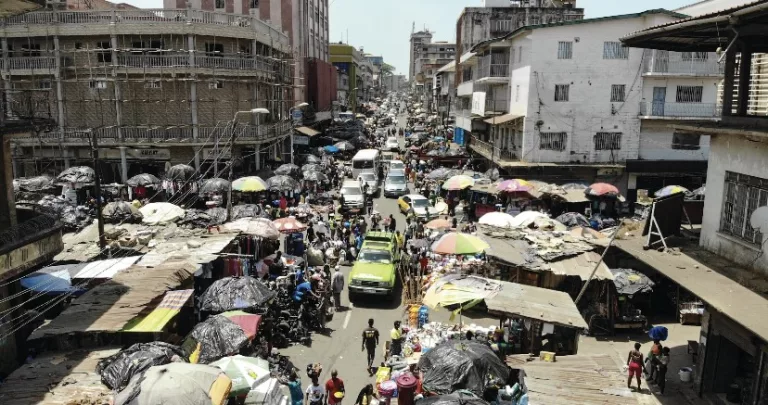
We spot a policeman who waves us down a promising-looking side street. Steering between people, stalls and wide-open drains lining both sides of the road, we progress to within a stone’s throw of our destination before realising we’ve reached a poda poda (minibus) stop. Podas podas, Freetown’s people carriers, are decorated with colourful designs and often slogans asking God or Allah to protect the driver.
The minibuses have no room to reverse, so we must wait. We inch our way forward. Just before we’ve reached the end of our tether, we finally enter the colourful gates of the old railway workshops that now house the National Railway Museum.
Having a railway museum in a country where the trains stopped running in 1975 might sound bizarre, and unless trains are your thing, I’d probably give it a miss. However, the passenger coach commissioned for Queen Elizabeth II’s visit at the time of independence in 1961 is a quirky exhibit. A last-minute change to her schedule meant she never used it. A rudimentary painting of the white-gloved, waving Queen is propped up in one of the carriage windows.
Somewhat shell-shocked by this stage, our final visit is a step back into the past at the nearby Old Fourah Bay College, a massive four-storey stone construction built in 1827, West Africa’s first university.
When civil war engulfed Sierra Leone (1991–2002), people displaced by the fighting flooded into Freetown, and families of internally displaced people took over the college. A catastrophic fire broke out in 1999, consuming the building’s roof and wooden floors. Miraculously, the main masonry superstructure survived and remains today, a literal shell of its former glory, but still with a certain nostalgic charm.
ALSO READ: Tunisia: The jewel of the North
The following day, a sombre yet essential visit to understand the history of Sierra Leone is on the cards. As our boat approaches the shores of the uninhabited Bunce Island, it is hard to shake the feeling of being transported back to a dark chapter of history.
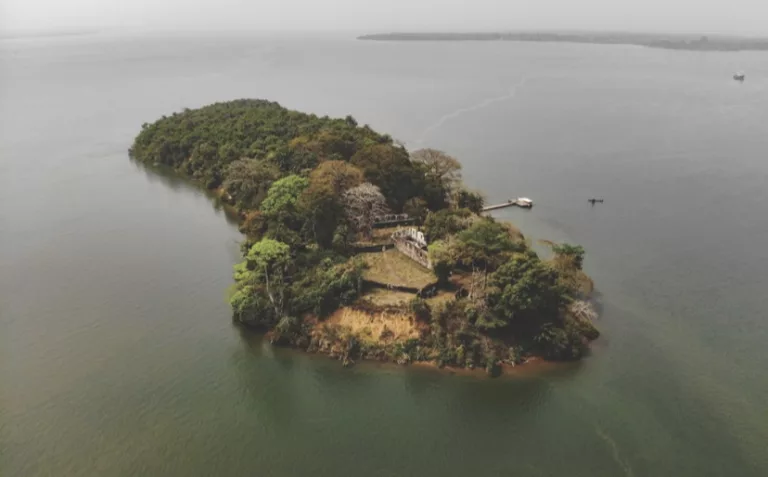
Tens of thousands of captive men, women and children were once crowded inside Bunce Island’s stone fort, shackled together in holding pens, waiting to board ships at the end of the island’s stony pier. Those who survived the subsequent 10-week journey across the Atlantic Ocean found themselves in an entirely new world – the plantations of the American colonies. The old slave fort is all but forgotten, its buildings decayed by two centuries of tropical rain and neglect, blanketed with overgrown weeds, with giant trees threatening to swallow it, and with few outside Sierra Leone even knowing of its existence.
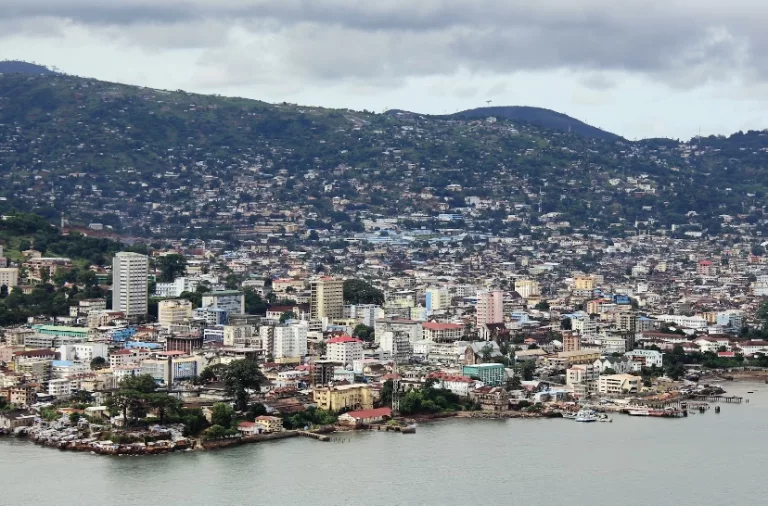
Freetown is more than its buildings and sights. Its people are warm and welcoming, and I am delighted to be invited to lunch at Cole Street Guest House with around 20 of Sierra Leone’s ‘happening’ ladies. Specialising in gourmet traditional sub-Saharan African cuisine, this restaurant is in the childhood home of Human-Rights-Lawyer-turned-Chef Miatta Latilewa Marke. We sit in the home’s tiled courtyard, shaded by a java apple, and dine on modern twists of some of Miatta’s grandmother’s Krio (Creole) recipes: barracuda-topped cassava tortillas, lobster-filled huntu (steamed cornmeal dumplings), oysters, prawns and more.
Musicians play kelei (slit-log drums), sangbei (skin drums) and shegbureh (a type of rattle). Several guests jump up to dance, trying unsuccessfully to teach me how to move my hips in a traditional style. A fire-eater performs hair-raising moves, and the conversation grows loud and jolly. The guest list is extensive: politicians, journalists, radio personalities, teachers, lawyers, designers and more. Our host is Fashion Designer Mary-Ann Kaikai, whose label, Madam Wokie, produces exclusive West African-inspired garments and accessories. Her brand name was inspired by her maternal great-grandmother, Madam Wokie Massaquoi, one of the few female Paramount Chiefs in postcolonial Sierra Leone. Also on the guest list is local Artist and Humanitarian Josephine Dauda, whose father, the former Vice President of Sierra Leone, attended Fourah Bay College.
Full of fabulous food, I don’t know if I’ll have the appetite to honour my invitation to a cooking demonstration followed by dinner with Chef Susan Senesi. Susan tells me about traditional Sierra Leonean dishes, such as spicy krain-krain (leaf stew), sweet plantains served with binch (black-eyed beans), groundnut soup, jollof rice, smoked fish, foofoo (a sticky dough made from fermented, pounded cassava) and acheke, a dish of red snapper served with garri (a coarse granular flour). Then, we roll up our sleeves and dive into a home-cooking class, during which Susan shares the stories behind the dishes, turning our meal into a cultural immersion.
The Tacugama Chimpanzee Sanctuary, just outside Freetown, is next on our itinerary the following day. Sierra Leone’s forests are shrinking, so its chimpanzees’ habitats are disappearing. There were around 20 000 western chimpanzees in Sierra Leone in the ’70s, but only 5 500 were left by 2008. Logging, agriculture and habitat encroachment cost many chimps their homes, while others fell victim to hunters or were trafficked as pets. Tacugama has become a lifeline for Sierra Leone’s chimps.
In 1988, Tacugama’s founders, Bala and Sharmila Amarasekaran, found an emaciated, orphaned baby chimpanzee tied to a tree in one of the rural villages, where it was kept as a pet. Fearing for the chimp’s future, they paid $20 for him and took him home. Over the next few years, the couple took in more abandoned chimpanzees until, by 1993, they had seven, all housed in a makeshift shelter in their Freetown garden. Desperately needing more space, they began a campaign to create a chimpanzee reserve within the Western Area Peninsula National Park in the heart of the Freetown peninsula. The sanctuary finally opened its doors in 1995.
Tacugama now cares for around 119 rescued chimpanzees. Some have been badly treated and bear the scars of snares and abuse; others carry the mental scars of growing up without mothers and being kept in chains or confined to small cages. The sanctuary has become a haven for these animals, providing them a second chance at a life of peace and security. I am lucky Bala himself shows me around, but there are regular twice-daily tours of the sanctuary as well as several eco-lodges where visitors can spend the night.
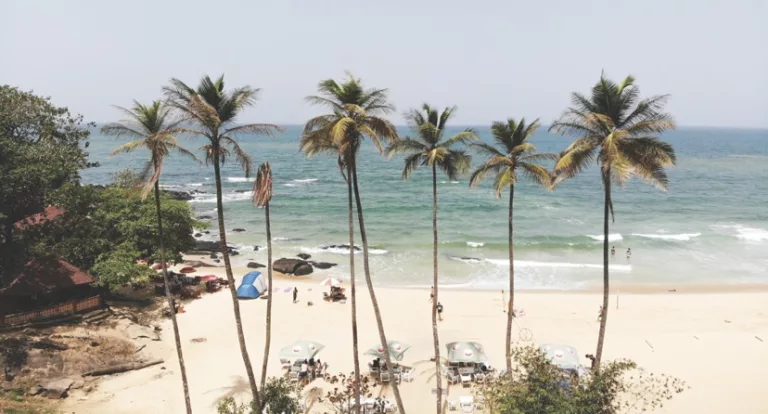
Sierra Leone’s coastline is dotted with some of West Africa’s most beautiful beaches. Bureh Beach, just over an hour’s drive from Freetown, is the surfing capital of Sierra Leone, with waves for all levels of experience.
A gorgeous beach and beautiful mangroves, where the forest meets the sea, make this a great spot to visit. Closer to the capital, beaches like Tokeh and River No 2 are decent spots to unwind and have a sprinkling of restaurants selling fresh seafood and snacks. If you’re feeling adventurous, head out of town to the Banana Islands, popular among backpackers and perfect for snorkelling and soaking up the laid-back atmosphere. Boats to Dublin, the largest and most-visited of the Banana Islands, depart from Kent, an hour’s drive from Freetown. For something remote, head to the Turtle Islands, which are almost untouched by tourism, but check the tides and the size of your boat, or you may end up stranded on a sandbank.
Dusting off Sierra Leone’s sand reveals its sparkle. Given the country’s limited tourism infrastructure, it’s not the most straightforward destination to explore, but that’s part of its charm. Anything resembling luxury is rare outside of Freetown, so having a sense of adventure is crucial. But for those willing to step off the well-trodden path and embrace the unfiltered charm of West Africa, this is the place to be. Sierra Leone is much more than a destination; it’s an experience.
Traveller’s Tips
Website and online booking can often be challenging. Using a local travel company to assist with this is a good idea. I used Tourism Is Life for accommodation bookings and transfers around the country.
Cash is king in Sierra Leone. There aren’t many ATMs in the country. You can use your card at hotels and some restaurants in Freetown, but expect to pay cash for everything outside of the capital. You can exchange money at the airport, the bank or in the street with the ‘dollar boys’.
This article was written by Sarah Kingdom for Getaway’s August 2024 print edition. Find us on shelves for more!
Pictures: Sourced/Courtesy Images
Follow us on social media for more travel news, inspiration, and guides. You can also tag us to be featured.
TikTok | Instagram | Facebook | Twitter
ALSO READ: Why Ibiza should be on your bucket list

